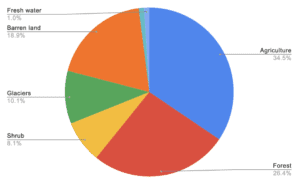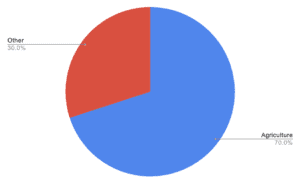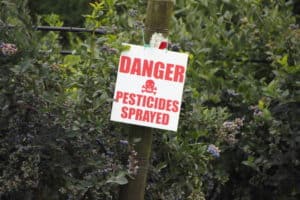
In the last decade, vertical farming has gained momentum and the number of vertical farms in Europe, Asia, and North America has increased notably. Vertical farming quickly transformed from a novel, up-and-coming technology into a multi-billion-dollar industry that by 2028 is expected to reach $21.15 billion. Now lets quickly go over some benefits of vertical farming and advantages of vertical farming as well.
Vertical farms are often praised for their outstanding ability to significantly reduce the use of natural resources such as land and water, however, these are only two in the long list of advantages that vertical farming offers. Due to their highly automated facilities and controlled conditions, vertical farms are capable of producing a wide range of fresh, pesticide, and herbicide-free crops all year round. Moreover, they can completely eliminate major environmental polluters such as agricultural runoff and reduce greenhouse gas emissions.
This article will describe in detail all advantages of vertical farming.
Decrease the Usage of Land
Agriculture continues to be the world’s major land user and it is the primary cause of deforestation and forest degradation. About five billion hectares of land, or about 35% of the Earth’s surface (excluding oceans), have been reclaimed for agricultural purposes. According to a recent report by Greenpeace International, almost 50 million hectares of forest lands were cleared for agriculture production by the start of 2020.

This extensive land use by the agricultural sector is harming Earth’s climate, biodiversity, and ecosystems. The loss of habitat caused by land clearing has contributed to the extinction of various bird, insect, and mammal species. Since 1970, farmland bird populations like the grey partridge have declined by 56% due to food scarcity, habitat loss, and the use of harmful pesticides. Moreover, food production is currently facing both a reduction in productive farmland and a sharp rise in consumer demands.
New farming practices, such as indoor agriculture and vertical farming, promise to lessen these adverse effects that conventional agriculture has on natural resources and biodiversity as they are capable of producing a large quantity of fresh food on a small surface area. It is estimated that around 0.4 ha of indoor farming produces the equivalent of at least 1.6 and 2.4 hectares of outdoor farming. In addition, an independent study found that a 30-story building with a base area of 2 ha can produce the equivalent of 971.2 ha of conventional farming.
This efficient land use can be attributed to the unique vertical layout of these vertical farms. In a classical vertical farming system, crops are grown in specific containers that are stacked vertically over one another. This method maximizes space use and increases production per square foot. A similar configuration is also used by a Newark-based vertical farm, “AeroFarms”, which boasts annual productivity of around 390 times greater than that of conventional agriculture. Furthermore, vertical farming is also transforming abandoned factories, warehouses, and shipping containers into fully functioning indoor farms. For instance, “The Plant” a vertical farm operating in Chicago, is built on a former pork-packaging plant. Whereas, “Freight Farms”, “CropBox” and “Growtainers” have successfully managed to grow crops vertically in 40-foot shipping containers.

Shop The Farmstand – Self-Watering, Self-Fertilizing Solution for an Easy to Grow Harvest
Requires Minimal Amount of Water
Conventional agriculture is also the largest user of freshwater, accounting for around 70% of freshwater withdrawals worldwide. In the US alone, agriculture makes up 80% of total water demand. To meet the daily dietary needs of a single person approximately 3,000 liters of water are required. Yet in many parts of the world, water is a scarce and highly-priced commodity, especially in the Middle East.

With indoor farming, these countries will be able to produce fresh and healthy food while reducing water consumption. Vertical farms through their recycling systems have successfully reduced their water consumption by 95% and in some cases even as low as 99%. Since plants are grown indoors, water released from the evaporation and transpiration processes is recaptured by dehumidification systems and redistributed again.
Moreover, the filtration of excess water accumulated at the base of the plant towers has considerably reduced the demand for irrigation water as well. Various vertical farms have implemented an aquaponics-based recirculating farming system that functions in a closed-loop. In this system, plants treat wastewater generated from fish tanks by removing nitrogen and phosphorous, which also serve as plant fertilizers. The treated water, on the other hand, is re-used to satisfy the water needs of plants. As a result, water is recycled, and artificial fertilizers are omitted.
Doesn’t Use Pesticides and Other Chemicals
When grown outdoors, plants are exposed to many biotic stresses that hinder their growth, therefore, farmers routinely use pesticides, herbicides, fungicides, and other chemical agents to ward off weeds, insects, and harmful microorganisms. It is estimated that more than 5.6 billion pounds of pesticides are used globally each year. This overuse of pesticides and other chemical substances has devastating effects on biodiversity and poses a grave threat to innumerable aquatic species.

In vertical farming, however, the use of pesticides and herbicides is negligible and usually nonexistent. Since crops grow in isolated and highly controlled environments, they are not exposed to any biotic stress, hence the application of chemicals is unnecessary. As a result, vertical farming produces a broad range of chemical-free and often organically certified vegetables and herbs.
Eliminates Agricultural Runoff
Agricultural runoff is the primary pollutant in rivers and streams and the leading cause of eutrophication. Runoff occurs when nutrient-rich fertilizers and manure are washed away into the rivers, oceans, and lakes during heavy rainfall or irrigation. The accumulation of nitrogen and phosphorus in these water bodies results in algal blooms, resulting in eutrophication and ultimately loss of biodiversity.
Hydroponic, aeroponic, and aquaponic farming techniques allow vertical farmers to cultivate their desired crops in soil-free media that provides plants with all the necessary nutrients for optimal growth. Along with a controlled water cycle, vertical farms are able to eliminate run-off pollution and nitrous oxide emissions. In addition, since the fertilization process is automated any potential runoff that may occur in vertical systems can be effectively contained, treated, and disposed of in an appropriate manner.
Provides Year-Round Consistent Production
In conventional farming, weather conditions and growing seasons greatly limit the all-year-round diversity and availability of locally grown fruits and vegetables. Cucumber, tomatoes, okras, eggplants, lettuce, and many other healthy vegetables can be locally grown outdoors only during the hot summer months, limiting customers to season crops or to imported produce. When imported these products usually travel thousands of kilometers and emit a substantial amount of CO2 in the atmosphere until they finally reach our tables.
In vertical farms, however, all kinds of leafy greens, herbs, and vegetables can be grown 365 days, regardless of the weather conditions, climate, or growing seasons. The automated and heavily controlled vertical systems provide plants with all the necessary growing conditions for optimal development. Moreover, vertical farms are also able to create a perfect environment for exotic fruits to grow in countries they normally wouldn’t.
Exotic herbs such as wasabi are currently grown locally in very cold countries such as Iceland. The Iceland-based hydroponics farm Jurt Hydroponics has successfully managed to produce organic wasabi that is currently sold in local markets. Vertical farms offer an immense potential to recreate the natural growing conditions of many crops and to produce them all year round, eliminating agriculture’s dependency on weather conditions and growing seasons.
Extreme Weather Conditions Don’t Affect the Crops
Food production is especially vulnerable to extreme weather conditions such as droughts, floods, hurricanes, and heatwaves. Droughts, in particular, are detrimental to crop production as in 1964 and 2007 it was estimated that they reduced crop yields by as much as 10%. Severe weather events are also expected to increase due to climate change, posing a serious threat to global food security.

At present, conventional farming is highly dependent on growing seasons and often suffers massive economic losses caused by these unpredictable weather conditions. Floods caused over $1 trillion in damages globally between 1980 and 2013. Whereas, In 2016 alone, these damages amounted to over $60 billion.
Farming vertically eliminates the season-dependent nature of agriculture allowing farmers to grow any kind of crop year-round. This is possible due to the well-monitored growing conditions, controlled by state-of-the-art vertical farming technology. Vertical farmers have absolute control over the cultivation process and the cultivation area as well. Crops grown on vertical farms are climate-proof and remain unaffected by these abrupt changes in climate. Thus, they continue to grow normally, ensuring a constant supply of fresh food every day of the year.
Crops Can Be Grown in Cities
Fresh produce and other agricultural products travel thousands of kilometers before they land on our dinner plates. Tomatoes, for instance, travel 1,369 miles just to reach the shelves of our local grocery stores. New research has shown that the nutritional value of vegetables, herbs, and other fresh products diminishes when they are transported for long distances.
Spinach, for example, loses roughly 22% of its lutein and 18% of its beta-carotene content. While lettuce loses 46% of its most important components within seven days of being stored in the cold. Long-distance travel not only reduces nutritional values but also contributes to climate change by releasing substantial amounts of CO2 and other greenhouse gases into the atmosphere.
Vertical farms, on the other hand, are typically located near urban areas and even in city centers (for example Manhattan in NYC), so their products reach customers within hours after harvest. This allows consumers to buy quality vegetables that are free from preservatives and rich in nutrients. Many vertical farms offer a pick-up option to their consumers as well.
“Volcano Veggies” for instance assigns a two-day pickup period per week, during which customers can collect their orders on-site. Since vertically grown products travel shorter distances, their environmental footprint is also significantly reduced.
Allows to Change the Properties of Crops
In vertical farms plant growth and development are supported by artificial lighting. The use of artificial lighting allows vertical farmers to naturally induce physical and biochemical changes in their crops by simply adjusting the type or amount of light they receive. Plants respond differently to different light wavelengths. Blue light, for example, is used to promote the opening of stomata and provides plants with plenty of energy. While red light variations like hyper red are very efficient in triggering photosynthesis and producing taller plants.
Plants can be physically affected by light combining different wavelengths as well. For example, red lighting plants will start to grow taller and thinner, but when 10% blue lighting is added, they become shorter and denser. In a recent study, the monochromatic red light was shown to increase lettuce yields more efficiently than monochromatic blue light or a combination of both. Moreover, an increase in the amount of red/blue lighting improved nutrient uptake and resulted in increased levels of foliar chlorophyll and flavonoids. Another study found that the use of high-energy LED lighting before harvest enhanced the production of antioxidants like anthocyanins in red-leaf lettuce.
By tweaking environmental conditions, such as lighting, vertical farmers can produce leafy greens with a higher nutritional value, maximize their yield, and increase their profits.
Safer and Cheaper Labor
Traditional farming continues to be heavily dependent on manual labor, especially in developing countries. The Food and Agriculture Organization of the United Nations (FAO) estimates that the agricultural sector employs over one billion people around the world. Many countries still employ farmworkers to carry out hazardous tasks such as pesticide/herbicide spraying or crop harvesting.
Vertical farms, due to their automated systems, have been able to considerably reduce their workforce and consequently their production costs as well. By using advanced equipment and state-of-the-art robotics, vertical farms have successfully automated various routine tasks such as sowing, watering, and fertilization, which are now carried out using automated dispensing technology.
Harvesting workers are replaced by a robotic arm able of picking, reaping, and uprooting crops. In addition, plant health monitoring, a task that in traditional agriculture is performed only by skilled and highly trained workers, on vertical farms is carried out by a high-tech monitoring system, which uses cameras to track plant growth and health. Once the system detects a plant with signs of poor health, it notifies the farm staff to inspect that plant personally. This technology has reduced the number of qualified workers and the time needed to manually inspect hundreds of acres of crops.
Reduces the Risk of Food Contamination
Recent years have seen an increase in the number of foodborne outbreaks related to fresh fruits and vegetables. The Center for Disease Control estimates that 1 in 6 people (about 48 million) in the United States alone suffer from foodborne illnesses with nearly half of them are caused by fresh produce.
Leafy greens such as lettuce, spinach, and herbs are often linked to bacterial infections, with Escherichia coli being the most common pathogen. The survival and growth of these microorganisms depend on a number of factors, including environmental conditions, harvesting, post-harvest processing, and transportation. The production of fresh produce by outdoor farming always carries an increased risk of foodborne outbreaks. A risk that is not present in indoor agriculture, where plants are grown under controlled temperatures, and isolated from external contaminants, bringing contamination and cross-contamination near zero.
Besides, vertical farms are equipped with floor cleaners, water quality sensors, and dosing systems to ensure the cleanliness of their growing space and surroundings. To prevent the contamination of fresh produce, many vertical farms have also installed hand-washing stations and require their employees to change out of their street clothes prior to working on farm premises.
The risk of contamination and cross-contamination is eliminated during transportation as well, given that vertical crops do not have to travel long distances to reach the consumer.
Doesn’t Depend on Soil Condition
Soil is a vital component of traditional agriculture as it provides physical support and contains all the necessary nutrients for optimal plant growth. Yet, in the quest to produce enough food for the world’s ever-increasing population, traditional agriculture is deteriorating soil’s health. The excessive application of pesticides, monoculture, and tillage, has led to soil degradation and in many cases soil erosion. Soil erosion refers to the loss of topsoil from wind, water, tillage, and other farming activities, rendering it unsuitable for plant growth. It is one of the biggest threats to global food security and biodiversity. It is also a major polluter of rivers and streams.
In vertical farming, plants are grown in soil-free environments. Hydroponics and aeroponics are the most commonly used technologies in vertical systems.
In hydroponic systems, the soil is replaced by nutrient-rich water solutions that provide plants with all the necessary nutrients for optimal growth. Plant roots are either partly or fully submerged in the liquid media and in some cases, they are fixated using damp inert materials such as Rockwool and vermiculite.
Aeroponics is an advanced version of hydroponics, where plant roots are grown in an air/mist nutrient-rich environment or are directly sprayed with a nutrient water mixture. These systems are able of producing substantial amounts of leafy greens and other crops while completely eliminating soil use. That could contribute to a reduction in land demand for agriculture, allowing for the regeneration and fertility of soils.
In the leafy world of agriculture, vertical farming stands tall—literally. It’s the agricultural equivalent of a high-rise, squeezing every last drop of utility from a tiny footprint. This isn’t just farming; it’s farming with a view. So, if you’re ready to elevate your greens and possibly your serotonin levels (because who doesn’t love a bit of greenery in their living space?), then it’s high time to consider going vertical. Not only will your veggies be fresher than a comedian at an open mic night, but you’ll also be making a choice that’s as kind to the planet as it is to your palate. If you want to get started for a little over $100, I recommend this complete set up and these seeds to go with it. Happy Farming Folks!
